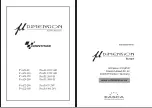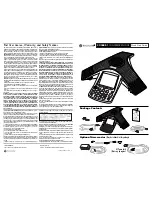
SAMSUNG
General Description
DCS-816
March 1999
4 - 9
A double burst of warning tone sounds and repeats for every 10 seconds.
This feature does not work from single line sets.
Without Warning Tone
When the barge–in without tone option is set, the barging–in keyset has its
microphone muted and the barged–in on station does not receive an
override display. This feature does not work from single line sets.
WARNING
BARGE–IN WITHOUT TONE MAY VIOLATE THE LAW CONCERNING THE
RIGHT TO PRIVACY. SAMSUNG ELECTRONICS CO. LTD IS IN NO WAY
RESPONSIBLE FOR THE POSSIBLE MISUSE OF THIS FEATURE.
Executive/Secretary Pooling
Each keyset may be defined as a BOSS or a SECRETARY in system
programming. Each BOSS can have up to four SECRETARIES and each
SECRETARY can have up to four BOSSES. These arrangements are known as
executive/secretary pools. There can be multiple pools in a system. When a
BOSS is in DND, all calls to the BOSS ring the first SECRETARY assigned to
that BOSS; if that SECRETARY is busy, the call passes to the next available
SECRETARY assigned to that BOSS. If the SECRETARY must communicate
with the BOSS while he/she is in DND, pressing the corresponding BOSS key
on the SECRETARY's keyset results in an Auto Answer intercom call being
made to the BOSS (provided the BOSS should be free). A station can only be
the BOSS of one SECRETARY pool. In addition, a station cannot be in more
than one pool.
External Music Interfaces
DCS-816 provides an interface for connecting a customer–provided external
music source. This source can be used for background music, station music on
hold or trunk music on hold.
External Page Interfaces
DCS-816 provides one external page output and it can be assigned to operate
with the dry contact in the system.
Flash Key Operation
While a user is on an outside line, pressing the FLASH key will flash the central
office or PBX. This is used for custom calling features on C.O. lines or in
conjunction with CENTREX/PBX operation. System programming allows
individual flash times for C.O. and PBX lines. When C.O. or PBX flash is not
required, setting the timers for two seconds releases the existing call and returns
dial tone to make a new call.
Flexible Numbering
System programming allows stations to have two-, three- or four-digit extension
numbers beginning with the digit 2. Default extension numbers begin with 201.
Station hunt group access codes can be two or three digits beginning with the
digit 5. These can be changed but will affect other feature access codes. All
user guides are written using the default numbering plan.
















































